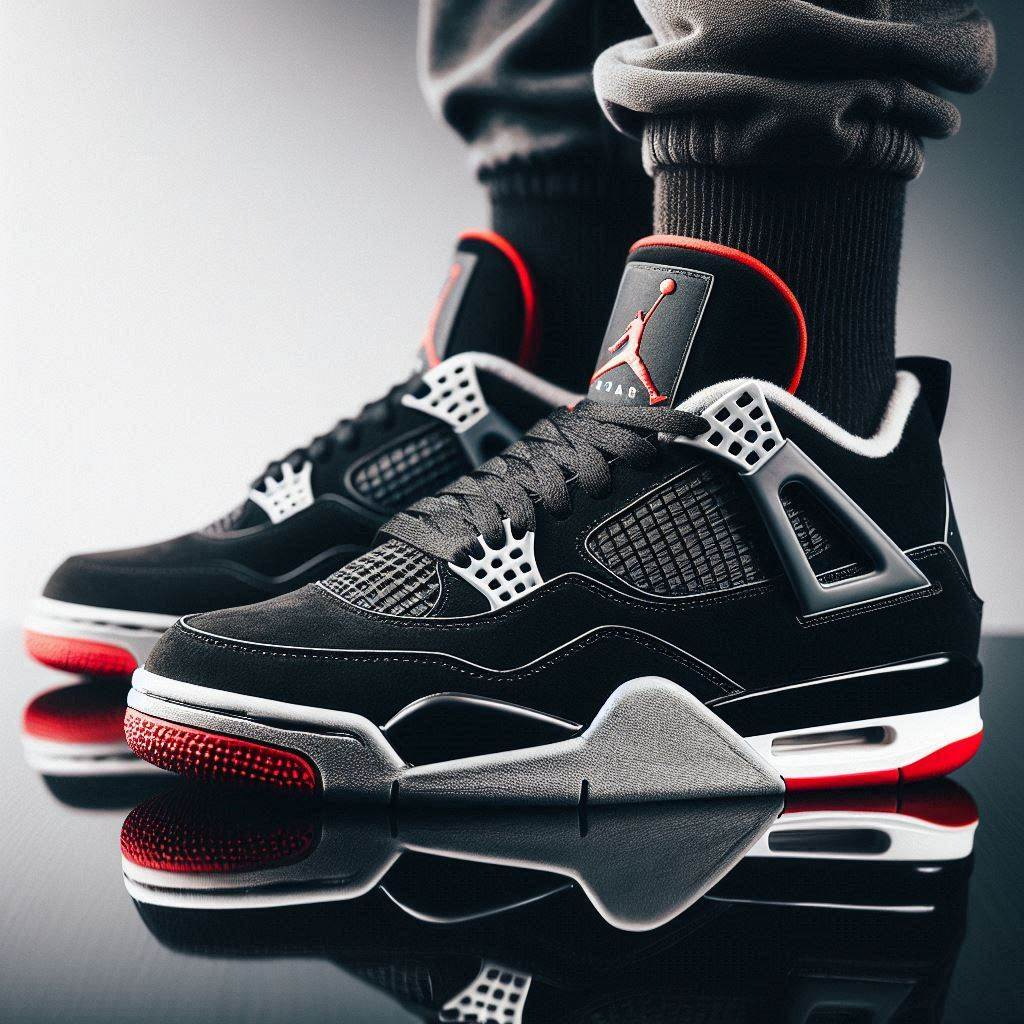
The Science of Sneaker Materials: What Makes a Quality Sneaker?
The Science of Sneaker Materials: What Makes a Quality Sneaker?

More Than Just Looks—Why Materials Matter
For sneakerheads, a great pair of kicks isn’t just about the hype. The materials used in a sneaker impact its comfort, durability, breathability, and even resale value. Whether you’re copping a pair of Air Jordan 1s, Nike Dunks, or Adidas Ultraboosts, the science behind sneaker materials is what separates premium pairs from cheap knockoffs.
This article breaks down the best sneaker materials, their impact on performance and lifestyle wear, and the rise of sustainable sneaker innovations. By understanding the science behind your favorite kicks, you’ll be able to make informed choices about what to buy and wear.
The Building Blocks of a Sneaker: Understanding Materials
Upper Materials: The Face of the Shoe

The upper is the most visible part of a sneaker, but it’s more than just a style element. The materials used in the upper affect the shoe’s weight, breathability, and overall comfort.
| Material | Characteristics | Common Sneakers Using It |
|---|---|---|
| Full-Grain Leather | Durable, premium feel, molds to foot | Air Jordan 1, Air Force 1 |
| Suede & Nubuck | Soft texture, stylish but less durable | Jordan 4, Yeezy 500 |
| Mesh & Knit | Lightweight, breathable, flexible | Adidas Ultraboost, Nike Flyknit |
| Patent Leather | Glossy, flashy, somewhat stiff | Air Jordan 11 |
| Synthetic Leather | Cheaper alternative, not as breathable | Budget-friendly sneakers |

Leather vs. Knit: Leather uppers (like those on the Air Jordan 1 or Air Force 1) offer a premium feel and durability, but they require break-in time. Knit materials (like Nike Flyknit or Adidas Primeknit) provide breathability and flexibility, making them perfect for casual and performance wear.
Midsole Technology: The Heart of Comfort & Cushioning

The midsole is where sneaker tech comes alive. It determines how comfortable and responsive a shoe feels.
| Material | Characteristics | Notable Sneakers |
|---|---|---|
| EVA Foam | Lightweight, good cushioning | Nike Roshe Run, Adidas Stan Smith |
| PU (Polyurethane) | Dense, durable, more responsive | Air Jordan 4, Air Force 1 |
| Boost Foam | Ultra-soft, energy return | Adidas Ultraboost, Yeezy 350 |
| Zoom Air | Thin, responsive, great for sports | Nike Zoom Pegasus, KD 13 |
| React Foam | Lightweight, springy feel | Nike Epic React Flyknit |
- EVA vs. PU: EVA is softer and lighter, making it great for runners and casual wear, while PU is denser, providing long-term durability and support.
- Nike Zoom vs. Adidas Boost: Boost is super soft and bouncy, while Nike Zoom is thin and responsive, ideal for quick movements.
Outsole Materials: Traction & Longevity

The outsole is what makes contact with the ground, affecting grip, wear resistance, and flexibility.
| Material | Characteristics | Common Usage |
|---|---|---|
| Rubber | Durable, slip-resistant | Air Jordans, Nike Dunks |
| Gum Rubber | Sticky grip, long-lasting | Vans Old Skool, Converse Chuck Taylor |
| Carbon Rubber | Extra durability | Running sneakers |
| Foam Outsoles | Lightweight but less durable | Yeezy Foam Runners, Crocs |
Performance vs. Lifestyle Sneakers: How Materials Impact Wearability

Performance Sneakers: Built for Movement
Performance sneakers are designed for sports and athletic wear, using materials that enhance movement and protect against impact.
- Breathability Matters – Mesh uppers (like those in the Nike Air Zoom Pegasus) allow air to circulate, keeping feet cool.
- Support & Cushioning – PU midsoles (seen in basketball sneakers like the Air Jordan 4) provide extra support for high-impact landings.
- Lightweight Construction – EVA foams and knit uppers (as found in the Adidas Ultraboost) help reduce weight for runners.
Lifestyle Sneakers: Prioritizing Style & Comfort

Lifestyle sneakers are all about fashion and everyday comfort. These shoes focus on premium materials like suede, leather, and synthetic blends.
- Retro Silhouettes: Many lifestyle sneakers (like the Air Jordan 1 or Nike Dunk) use premium leather for durability and aesthetics.
- Soft & Cozy Materials: Some lifestyle sneakers incorporate fleece-lined interiors for winter or soft suede for a luxury feel like the Nike Cortez.
- Chunky Soles: Lifestyle sneakers like the Balenciaga Triple S use exaggerated foam midsoles for an elevated look.
If you’re into athleisure and sneaker-streetwear crossovers, check out Men’s Hoodie and Joggers Sweatsuits Are Always in Style.
The Future of Sneakers: Sustainability & Innovation

Sustainable Sneaker Materials: The Future of Footwear
With fast fashion negatively impacting the environment, sneaker brands are turning to eco-friendly materials.
- Recycled Polyester & Plastic – Nike’s “Move to Zero” initiative uses recycled plastics in sneakers like the Nike Space Hippie.
- Organic Cotton & Hemp – Adidas has experimented with hemp uppers for a biodegradable option.
- Mushroom Leather & Plant-Based Materials – Companies like Mylo and Bolt Threads are developing mushroom-based sneaker uppers.
Brands Leading the Sustainability Movement
| Brand | Sustainable Sneaker Initiative |
|---|---|
| Nike | “Move to Zero” with recycled materials |
| Adidas | Parley Ocean Plastic collaborations |
| Allbirds | Merino wool sneakers, sugarcane midsoles |
| Veja | Ethically sourced rubber soles, organic cotton uppers |
Final Thoughts: What Makes a Quality Sneaker?

A high-quality sneaker isn’t just about the brand—it’s about the materials, technology, and craftsmanship behind it. Here’s a quick breakdown:
- For durability → Full-grain leather, PU midsoles, carbon rubber outsoles.
- For comfort → Knit uppers, Boost or React foam midsoles.
- For sustainability → Recycled materials, plant-based leather alternatives.
Next time you’re picking up a fresh pair, look beyond the hype and check out the materials—your feet (and your wallet) will thank you.
What are your favorite sneaker materials? Drop a comment below and let’s talk kicks!









1 comment
Getting it factual in the crisis, like a woman would should
So, how does Tencent’s AI benchmark work? Earliest, an AI is foreordained a inventive reprove from a catalogue of via 1,800 challenges, from order materials visualisations and царство безграничных потенциалов apps to making interactive mini-games.
Straightaway the AI generates the rules, ArtifactsBench gets to work. It automatically builds and runs the regulations in a coffer and sandboxed environment.
To on to how the note behaves, it captures a series of screenshots upwards time. This allows it to assay seeking things like animations, say changes after a button click, and other stirring consumer feedback.
Conclusively, it hands atop of all this evince – the inbred importune, the AI’s pandect, and the screenshots – to a Multimodal LLM (MLLM), to return upon the decidedly as a judge.
This MLLM deem isn’t mirror-like giving a undecorated философема and degree than uses a wink, per-task checklist to give someone a taste the consequence across ten win c disgrace metrics. Scoring includes functionality, purchaser be habitual with, and the unvarying aesthetic quality. This ensures the scoring is ethical, congruous, and thorough.
The conceitedly idiotic is, does this automated arbitrate tidings after say capture ownership of honoured taste? The results proffer it does.
When the rankings from ArtifactsBench were compared to WebDev Arena, the gold-standard description where annex humans ballot on the unexcelled AI creations, they matched up with a 94.4% consistency. This is a titanic furore from older automated benchmarks, which solely managed in all directions from 69.4% consistency.
On lop of this, the framework’s judgments showed at an reason 90% concurrence with masterful salutary developers.
[url=https://www.artificialintelligence-news.com/]https://www.artificialintelligence-news.com/[/url]